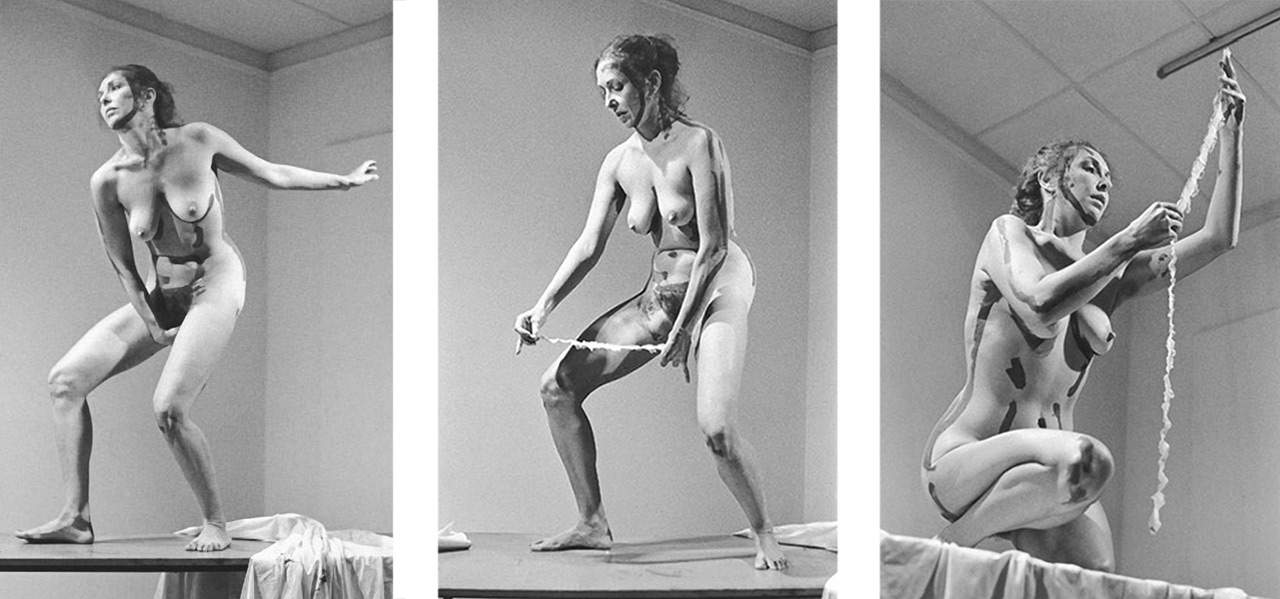U.S. artist Carolee Schneemann, a pioneer of body and performance art whose bold works broke several taboos about sex, gender and the use of the body as a work of art, passed away on March 6 at the age of 79. Born in Fox Chase, Pennsylvania, in 1939, Schneemann began her career as a painter in the 1950s under the banner of Neo-Dada art. After graduating from the University of Illinois in 1962, Schneemann decided to give her art a strong identity and, along with artists such as Mary Beth Edelson and Judy Chicago, can be counted among the first feminist artists who infused artworks with strong political messages in the era of protest.
Her first important work is Eye Body of 1963, an environment created with a variety of objects and in which the artist had also inserted herself, to become part of the oepra, covering herself with different materials (such as grease, plaster, plastic). The performance had then been documented with 36 “transformative actions,” Icelandic artist Erró’s photographs of her in the environment, which also caused much discussion because in one of these images Carolee Schneemann uncensoredly put her own clitoris on display. This was a work that had a major influence on performance art. Schneemann’s production then continued in 1964 with a performance entitled Meat Joy, which gathered eight people dancing and playing with objects and substances evoking ancient Dionysian cults. The same year saw the production of a short film, Fuses, an eighteen-minute film in which the artist filmed herself and her then-boyfriend, James Tenney, while the two were having sex observed by their cat: again, this was a work that caused a sensation and one that Schneemann considered important in that it was driven by a desire to understand whether a woman’s self-representation of sex was different from the representations proposed by traditional art or pornography (in which, as is well known, the male point of view prevails).
Between 1973 and 1976 Schneemann became the protagonist of the action Up to and including her limits, during which the artist had herself hung, naked, from the ceiling of an empty room, and with the movement of her body drew lines on the walls and floor: it was a kind of critique of abstract expressionism, then dominated exclusively by male figures, and of the limits that the art environment actually imposed on women. But her most famous work probably remains Interior scroll of 1975: the artist, then 36, at the height of her action unrolled a book contained inside her vagina and then began to read its sentences, in a performance filled with symbolic references to classical art, the cycle of life, and the rituality of the ancients.
Beginning in the 1980s, his appearances became more sporadic: among his most significant recent works is Terminal Velocity, a response to the September 11 attacks (the artist, in that case, had collected and put together a number of photographs of people who, in the course of the attack, had thrown themselves from the twin towers). He received numerous awards during his career: the most prestigious had been the Golden Lion for Lifetime Achievement received at the 2017 Venice Biennale. Her art has had a wide influence: many female artists in every field, from Marina Abramović to Yoko Ono, from Lady Gaga to Cindy Sherman, are indebted to her in some way.
Pictured: Carolee Schneemann in the action Interior scroll (1975).
 |
| Farewell to Carolee Schneemann, the performance and body art pioneer who broke all taboos |
Warning: the translation into English of the original Italian article was created using automatic tools. We undertake to review all articles, but we do not guarantee the total absence of inaccuracies in the translation due to the program. You can find the original by clicking on the ITA button. If you find any mistake,please contact us.